Intel Roadmap Shows SSDs Launching in Q3 2008
DailyTech – Intel Roadmap Shows SSDs Launching in Q3 2008
Extra info: http://www.anandtech.com/tradeshows/showdoc.aspx?i=3376
Intel SSDs will have a read speed of 240MB/sec and a write speed of 170MB/s
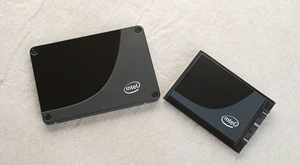

DailyTech – Intel Roadmap Shows SSDs Launching in Q3 2008
Extra info: http://www.anandtech.com/tradeshows/showdoc.aspx?i=3376
Intel SSDs will have a read speed of 240MB/sec and a write speed of 170MB/s

DailyTech – New Ribosomal Research Offers Fresh Evidence, Understanding of Evolution
Skepticism aside, evolution is steadily being verified and analyzed thanks to cutting edge computing
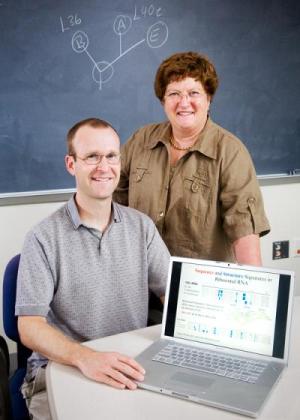
Nvidia demos real-time GPU ray tracing at 1,920 x 1,080 | News | Custom PC
Nvidia claims that it’s just demonstrated ‘the world’s first fully interactive GPU-based ray tracer’ at the show, which was achieved using a Quadro Plex 2100 D4 Visual Computing System (VCS) containing four Quadro GPUs, each with 1GB of memory.
Nvidia says that ‘the ray tracer shows linear scaling rendering of a highly complex, two-million polygon, anti-aliased automotive styling application.’ Impressively, Nvidia claims that the polished car demo runs at 30fps at 1,920 x 1,080, and includes ‘an image-based lighting paint shader, ray traced shadows, and reflections and refractions’ at three bounces.
Nvidia also demonstrated the demo running at 2,560 x 1,600, although frame rates have not been revealed at this resolution. Even so, the demo makes for a visual treat at this resolution, which demonstrates the gorgeous reflective potential of ray traced games


BBC NEWS | Science/Nature | Cern lab set for beam milestone
A vast physics experiment – the Large Hadron Collider (LHC) – reaches a key milestone this weekend ahead of an official start-up on 10 September.

DailyTech – OCZ Announces Core Series V2 SSDs with 170MB/sec Reads, 98MB/sec Writes
OCZ announces larger, faster SSDs with a built-in mini-USB port for firmware upgrades.
The SSDs will be available in 30GB, 60GB, 120GB, and 250GB storage capacities. In addition, read speeds have increased to 170MB/sec while write speeds are now listed at 98MB/sec across the whole product family.
Another interesting feature of the drives is the addition of a mini-USB port which allows end-users to increase the performance of their drives with future firmware updates from OCZ.

DailyTech – New DIY SSD Accepts Six Secure Digital Cards
Using six Transcend 8GB SDHC cards, Impress Watch was able to extract sequential reads of 111.4 MB/sec and sequential writes of 55.17 MB/sec while operating in a RAID-0 configuration. For comparison, the OCZ Core Series is rated at 120 to 143 MB/sec for reads and 80 to 93 MB/sec for writes; Super Talent’s upgraded MX Series SSDs clock in at 120MB/sec read and 80MB/sec write.
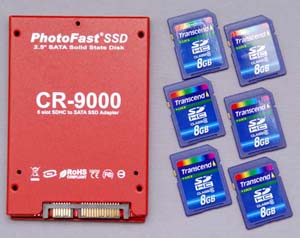

DailyTech – Commercially Developed Plasma Engine Soon to be Tested in Space
New Vasimir engine could cut Mars travel to 60-70 days, allow greater rocket fuel economy
The new rocket is named Variable Specific Impulse Magnetoplasma Rocket (VASIMR). A traditional rocket can produce a specific impulse of around 450 seconds, or in other words 1 pound of thrust from 1 pound of fuel for 450 seconds. VASIMR can produce several times this amount, cutting a trip to Mars from 6 to 9 months with conventional rockets down to a mere 2 to 3 months. It could do this by being able to burn fuel continuously the whole trip accelerating on the first half of the journey to Mars and decelerating on the second leg of the journey, preparing to enter orbit.
The rocket consists of three critical units or cells. The first is the plasma generator. It sits deepest into the rocket and consists of a generator which ionizes heated light gases such as hydrogen, creating plasma — atoms stripped of their electrons. The plasma, at a modest temperature of 10,000 °C, is then pumped into the second unit, the amplifier. In the amplifier cell the plasma is blasted with electromagnetic waves via radio waves. These waves heat the plasma burning hot similar to how food is heated in a microwave. Finally the ultra-hot plasma is channeled in magnetic containment fields to the final cell, the magnetic nozzle. This nozzle is the critical control which controls how much fuel exits, and how fast the exiting plasma is going.
The nozzle also protects the spacecraft from the burning hot plasma. How hot is the plasma exactly?? Well, early estimates are that it will be around 180 million degrees Fahrenheit (100 million degrees Celsius), only about 25,000 times hotter than the burning gases exiting the space shuttle. However, thanks to the magnetic nozzle the plasma can be tamed and channeled into useful impulse.
Dr. Chang-Diaz explains, “Rockets tend to work much better the hotter the exhaust is and the plasma allows you to go to temperatures millions of degrees rather than thousands of degrees in a conventional rocket engine.”
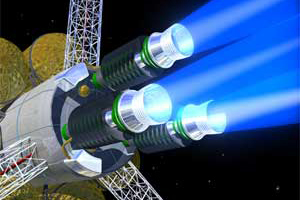
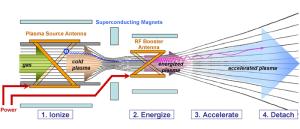
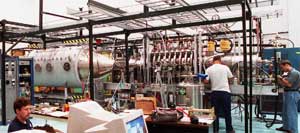
DailyTech – Scientists Find Ways to Cloak 3D Materials
Researchers at the Nanoscale Science and Engineering Center at the University of California, Berkeley have for the first time found a way to cloak 3D materials.
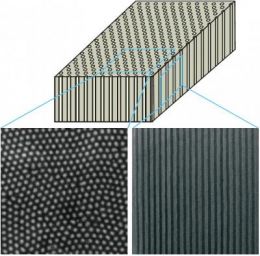
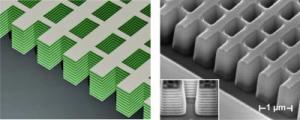
BBC NEWS | Health | Cell change ‘keeps organs young’
Researchers may have found a way to halt the biological clock which slows down our bodies over the decades.

DailyTech – Revolutionary Nanoantenna Skin to Provide Next Gen PC Cooling, Solar Cells
New technology could one day cool PC components and recharge consumer electronics, collecting energy even at night

DailyTech – “Tuned Light” Turns Opaque Materials Transparent.
It’s been a long-standing prediction of physics that visible light can actually pass through such “opaque” scattering mediums, using transparent channels known as eigenchannels. That theory has now been experimentally verified, thanks to a pair of researchers at the optical physics department of the University of Twente, Netherlands.
The two, Ivo Vellekoop and Allard Mosk, exploit the fact that such “disorded” mediums are fixed in time, and thus the seemingly random scattering process can be partially reversed. The process requires tuning relative phases of portions of a light beam so that they constructively interfere with each other.
Very interesting and informative articles about common myths about optimizing windows:
http://lifehacker.com/5033518/debunking-common-windows-performance-tweaking-myths
Physicists spooked by faster-than-light information transfer : Nature News
Physicists at the University of Geneva achieved the weird result by creating a pair of ‘entangled’ photons, separating them, then sending them down a fibre optic cable to the Swiss villages of Satigny and Jussy, some 18 kilometres apart.
The researchers found that when each photon reached its destination, it could instantly sense its twin’s behaviour without any direct communication. The finding does not violate the laws of quantum mechanics, the theory that physicists use to describe the behaviour of very small systems. Rather, it shows just how quantum mechanics can defy everyday expectation, says Nicolas Gisin, the researcher who led the study. “Our experiment just puts the finger where it hurts,” he says.

Here’s a list of a few very interesting articles by both DannyChoo.com and Japanmanship. They are great resources if you plan on getting a job in Japan.
DannyChoo talks a bit about the process of getting a job in Japan, and other options like making your own business or how to succeed making money out of your blog. Here are his articles:
Blog Related:
http://www.dannychoo.com/adp/eng/837/Blog+Monetization.html
http://www.dannychoo.com/adp/eng/954/Featured+Feeds+EX.html
http://www.dannychoo.com/adp/eng/958/Japanese+Media.html
http://www.dannychoo.com/adp/eng/1014/Japanese+Magazines.html
Jobs related:
http://www.dannychoo.com/adp/eng/815/Japan+Proprietorship.html
http://www.dannychoo.com/adp/eng/615/Work+in+Japan.html
http://www.dannychoo.com/adp/eng/1506/Japan+Work+Benefits.html
Japanmanship is about a guy working in Japan, in a japanese videogames company, as a graphics artist (I think). He’s married to a Japanese and posts very often in his blog about his job and misc stuff about Japan and videogames. In the following articles, he tells us about how to prepare your CV and interviews and the steps to get ready to do the move:
http://japanmanship.blogspot.com/search/label/A%20giant%20leap
http://japanmanship.blogspot.com/search/label/The%20cast
Recent Comments